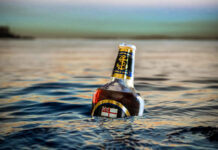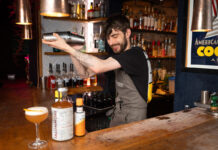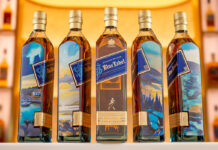
Operators should make the most of their beer fridge
IT’S the coolest place in the bar, but producers say operators must make proper use of their fridges if they want to showcase their range of bottled beers.
Brewers insist packaged beers allow licensees to create a point of difference that is distinct from cask and keg products.
But Belhaven brand manager Gordon Muir said fridge visibility is vital for increasing sales of bottles.
“Full height or eye-level fridges are great,” he said.
“And if that is not practical, a back-bar display of the bottles in your range will help drinkers choose, as well as tell them that you are serious about your beer.”
And he stressed that a bottled range should include beers that are different to those available on the bar.
This, Muir said, leaves room for “really interesting beers” such as imperial stouts, porters and oak-aged beers.
Jeremy Houston, national account manager for Innis & Gunn, agreed visibility was important.
“In most outlets, bottled beers will be stocked in fridges at floor level, ie. out of the line of sight,” he said.
“Lack of visibility equals lack of awareness so it’s key to advertise your beer range on menus, particularly as the majority of consumers who go to the pub don’t go to the bar.”
Bringing the story of a beer brand to life is particularly important, according to Williams Bros sales director Richard McLelland.
He said that hosting dedicated events can help to promote a bottled beer range.
“Table talkers, tasting events, meet the brewer and food-matching sessions are all great ways to promote craft beer,” said McLelland.
“People are always interested in the story behind a craft beer, so make sure your staff have all the beer knowledge and training they can get. Beer knowledge should be shown just as much respect in the drinks portfolio as wine and spirits.”
And licensees shouldn’t be afraid to change the brands in their fridge, said Colin Johnston, operations director at Drygate.
“Ultimately, the licensee needs to ensure they are covering the core styles – IPA, ale and lager – and listen to their customers,” said Johnston.
“Craft beer drinkers are transient beasts so it’s crucial to not be afraid to switch things if your beer line-up isn’t working for you.”
It’s not just craft beer brands which are competing for space in the fridge.
The world beer category is arguably even longer-established in the trade.
Tim Clay, sales director at Miller Brands, whose portfolio includes Peroni Nastro Azzurro and Pilsner Urquell, said the category has benefitted from the recent craft beer boom.
“World beers provide an opportunity for consumers to trade up and retailers to increase margins,” he said.
“The sector is evolving rapidly and during the last year we have seen interest increasing and talk about craft beer, which is good for the category as people are more open to discovering quality beer which adds value to the overall category.”
Grouping beers by their country of origin can also be an effective way of arranging a bottled range in the fridge, said Parminder Walia, senior category manager at Carlsberg UK.
She said: “One good idea is to group world beers together, which makes them easier to find for the [customer], be that by world, region, country or by brewer.
“Furthermore, make [customers] more aware of your world beer selection by adding signage or POS to denote the world beer section.
“Promoting larger bottles across the segment is also a good way to drive penetration with consumers, as well as leveraging the importance of world beers in beer and food matching.”
The range of bottled beers in the fridge will depend largely on the style of outlet and its customer base, and Carlo Valente, director of VC2 Brands’ Black Wolf Brewery, said the format is proving especially popular with younger beer aficionados.
He said: “Bottled beers, particularly craft beers, are more popular amongst those who are genuinely interested in beer and new younger discerning consumers with disposable income.
“Outlets that cater for these types of customers would find bottled beer sales most rewarding.”
This was echoed by James Wright, head of agency brands at Halewood International, the firm behind Tsingtao.
He said: “Bottled beers are popular in late night venues in the on-trade, where a range of branded glassware can be used.”
[hr]
“Full height or eye-level fridges are great or a back-bar display of the bottles in your range will help drinkers choose.”
– Gordon Muir, Belhaven
“Brewers need to focus on new styles and offer a point of difference from the craft beer draught offerings which are out there.”
– Bob Hogg, Inveralmond Brewery
“Craft beer drinkers are transient beasts so it’s crucial to not be afraid to switch things if your beer line-up isn’t working for you.”
– Colin Johnston, Drygate
“World beers provide an opportunity for consumers to trade up and retailers to increase their margins.”
– Tim Clay, Miller Brands
“Bottled beers are popular in late-night venues in the on-trade where a range of branded glassware can be used.”
– James Wright, Halewood



















